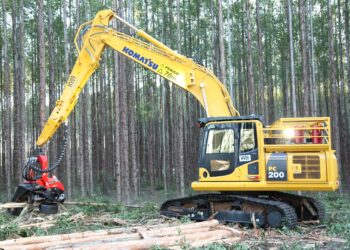Equipment lenders mull portfolio diversification strategies
Equipment finance originations down 2.8% YoY through August
Equipment lenders are emphasizing portfolio diversification in 2025 to capitalize on growth opportunities while managing risk amid tariffs and macroeconomic uncertainty.
Equipment and software investment is projected to jump 6.3% in 2025, according to the Equipment Leasing and Finance Foundation. Equipment finance originations have increased for two consecutive months after a shaky first half of 2025, although down 2.8% year over year through August, according to ELFA.
When diversifying, lenders must assess their capital structure, balance sheet needs or constraints, and the “risk level relative to reward we’re willing to take on,” Daryn Lecy, chief operating officer at Oakmont Capital Services, told Equipment Finance News.
“There’s no two playbooks in our industry that are exactly the same.”
— Daryn Lecy, COO, Oakmont Capital Services
For instance, some generalist lenders are “looking for any and all transactions” across multiple industries and asset classes, with a more narrowed focus on credit quality and pricing targets, Lecy said.
“Their diversification might be a little bit different than some of us that specialize in a smaller array of industries or certain borrower profiles,” he said.
Internal customers, data key
Specialty lenders can obtain a healthy mix of transaction types and credit structures within the primary industries that they serve by “growing their internal book of business,” Lecy said.
“They get some new business from those internal customers by growing those relationships or getting referrals from them,” he said. “But they’re probably still looking for a few new initiatives — possibly related assets or industries — to always build a little bit of diversification at the same time.”
Whether it’s the ticket size, asset class, credit profile or term structure, internal conversations between credit management, portfolio management and sales teams are crucial to determining the best areas to diversify, he said.
Data analysis also plays a key role in portfolio diversification, John Crum, head of Wells Fargo Specialty Equipment Finance and Leasing with a focus on transportation, told EFN.
Lenders “have to choose the asset classes that they’re comfortable with, that they understand,” he said.
“The nice advantage for equipment finance is, the data is out there, and it’s really trackable. You can find what you’re looking for with the reporting stats that we have out there.”
— John Crum, Wells Fargo Specialty Equipment Finance and Leasing
Testing the waters
Portfolio diversification presents some risk as lenders expand into new territory. Starting slow is one way to mitigate risk, Lecy said. Consulting with others in the industry can also help, he added.
“It’s always easier to dip your toe in the water a little bit and test things out before you jump in fully,” he said. “Then you’re exposed to all kinds of elements, so managing those risks are important.”
In addition, lenders must estimate the potential losses and workflow disruptions to mitigate risk, he said.
Register here for the free Equipment Finance News webinar “High-priced used equipment inventory: The no-man’s land of equipment finance” set for Tuesday, Oct. 21, at 11 a.m. ET.









